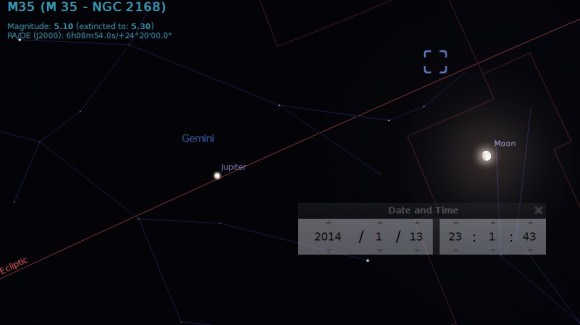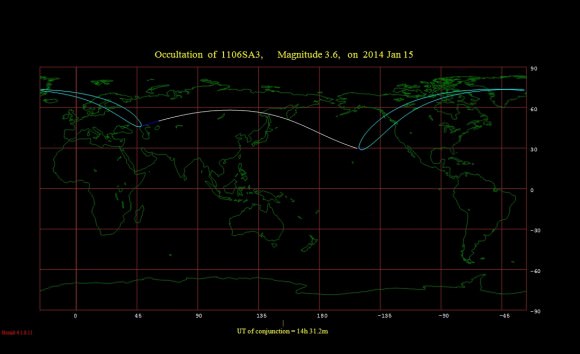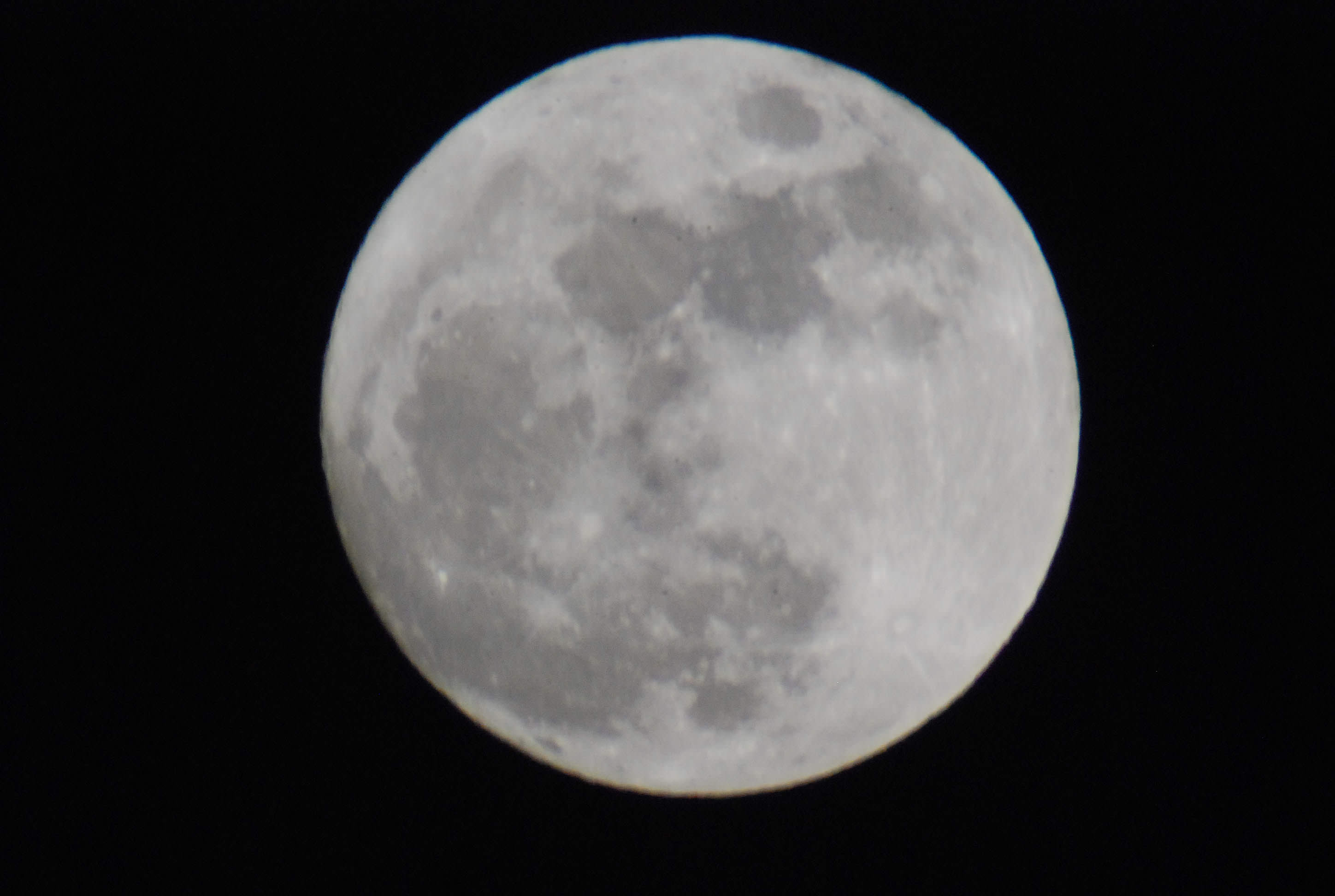Last month, (and last year) we wrote about the visually smallest Full Moon of 2013. Now, in a followup act, our natural satellite gives us an even more dramatic lesson in celestial mechanics with an encore performance just one lunation later with the smallest Full Moon of 2014.
We’ve noted the advent of the yearly Mini-Moon, a bizzaro twin to the often over-hyped “SuperMoon,” or Proxigean Full Moon. Occurring approximately six months apart, you can always expect lunar apogee to roughly coincide with the instant of a Full Moon about half a year after it coincides with perigee. In fact, the familiar synodic period that it takes the Moon to return to like phase (such as Full back to Full) of 29.5 days has a lesser known relative known as the anomalistic month, which is the period of time it takes the Moon to return to perigee at 27.55 days.
But the circumstances for “Mini-Moon 2014” are exceptional. The first Full Moon of the year occurs on the night of January 15th at 11:52 PM EST/4:52 Universal Time (on January 16th). This is just 2 hours and 59 minutes after the Moon reaches apogee at 406,536 kilometres distant at 8:53 PM EST/1:53 UT. This isn’t the farthest apogee that occurs in 2014, but it’s close: the Moon is just 32 kilometres more distant on July 28th, 2014. Apogee can vary from 404,000 to 406,700 kilometres, and this month’s apogee falls just 164 kilometres short of the maximum value.
As you can see, this year’s Mini-Moon falls extremely close to apogee… in fact, you have to go all the way back to the Full Moon of November 18th, 1994 to find a closer occurrence, and this year’s won’t be topped until May 13th, 2052! The Moon will appear only 29’ 23” in size on Wednesday night at moonrise, very close to its minimum possible value of 29’ 18”. This is also almost 5 arc minutes smaller than the largest “Super-Moon” possible.
Cool factoid: you actually move closer to the Moon as it rises, until it transits your local meridian and you begin moving away from it, all due to the Earth’s rotation. You can thus gain and lose a maximum of one Earth radii distance from the Moon in the span one night.
We also just passed the most northern Moon of 2014, as it reached a declination of 19 degrees 24’ north this morning at 8:00 UT/3:00 AM EST. This is a far cry from the maximum that can occur, at just over 28 degrees north. This is because we’re headed towards a “shallow year” as the Moon’s motion bottoms out relative to the ecliptic in 2015 and once again begins to widen out in its 18+ year cycle to its maximum in 2024-25.

This week’s Moon also visits some interesting celestial targets as well. The waxing gibbous Moon sits just 5.1 degrees south of the open cluster M35 tonight. Notice something odd about the Moon’s position Monday night? That’s because it is passing through Orion the Hunter, one of the six non-zodiacal constellations that it can be found in. Can you name the other five? Hint: one was the “13th sign of the zodiac that created a non-traversy a few years back.
On Tuesday evening, the Moon passes six degrees from the planet Jupiter. This presents a fine time to try and spot the planet in the daytime to the Moon’s upper left, just a few hours prior to sunset.
The Moon will also occult the +3.6 magnitude star Lambda Geminorum on January 15th for observers in northwestern North America. In fact, viewers along a line crossing central British Columbia will witness a spectacular graze along the lunar limb as the star winks out behind lunar mountains and pops into view as it shines through lunar valleys along the edge of the Moon. This can make for an amazing video capture, we’re just throwing that out there…

In addition to being this year’s Mini-Moon, the January Full Moon is also known as the Wolf Moon in the tradition of the Algonquin Native Americans, as January was a time of the mid-winter season when starving wolf packs would howl through the long cold night. The January Full Moon is also sometimes referred to as “The Moon after Yule,” marking the first Full Moon after Christmas.
And just when is the next Super Moon, you might ask? Well, 2014 has three Full Moons occurring within 24 hours of perigee starting on July 15th and finishing up on September 8th. But the most notable is on August 10th, when the Moon passes perigee just 27 minutes from Full. Expect it to be preceded by the usual lunacy that surrounds each annual “Super Moon” as we once again bravely battle the forces of woo and describe just exactly what a perigee Full Moon isn’t capable of. Yes, we still prefer the quixotic term “Proxigean Moon,” but there you go.
Also, be sure to wave a China’s Chang’e-3 lander and rover in the Bay of Rainbows (Sinus Iridum) as you check out this week’s Full Moon, as it just experienced its first lunar sunrise this past week.
Be sure to send those Mini-Moon pics and more in to Universe Today, and let’s get this week’s #MiniMoon trending on Twitter!

